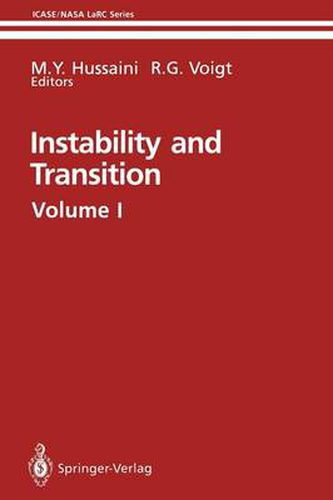Readings Newsletter
Become a Readings Member to make your shopping experience even easier.
Sign in or sign up for free!
You’re not far away from qualifying for FREE standard shipping within Australia
You’ve qualified for FREE standard shipping within Australia
The cart is loading…






This title is printed to order. This book may have been self-published. If so, we cannot guarantee the quality of the content. In the main most books will have gone through the editing process however some may not. We therefore suggest that you be aware of this before ordering this book. If in doubt check either the author or publisher’s details as we are unable to accept any returns unless they are faulty. Please contact us if you have any questions.
These two volumes contain the proceedings of the workshop on the Institute for Computer Instability and Transition, sponsored by Applications in Science and Engineering (ICASE) and the Langley Research Center (LaRC), during May 15 to June 9, 1989. The work shop coincided with the initiation of a new, focused research pro gram on instability and transition at LaRC. The objectives of the workshop were to (i) expose the academic community to current technologically important issues of instability and transition in shear flows over the entire speed range, (ii) acquaint the academic com munity with the unique combination of theoretical, computational and experimental capabilities at LaRC and foster interaction with these facilities, (iii) review current state-of-the-art and propose fu ture directions for instability and transition research, (iv) accelerate progress in elucidating basic understanding of transition phenomena and in transferring this knowledge into improved design methodolo gies through improved transition modeling, and (v) establish mech anisms for continued interaction. The objectives (i) to (iii) were of course immediately met. It is still premature to assess whether ob jectives (iv) and (v) are achieved. The workshop program consisted of tutorials, research presenta tions, panel discussions, experimental and computational demonstra tions, and collaborative projects.
$9.00 standard shipping within Australia
FREE standard shipping within Australia for orders over $100.00
Express & International shipping calculated at checkout
This title is printed to order. This book may have been self-published. If so, we cannot guarantee the quality of the content. In the main most books will have gone through the editing process however some may not. We therefore suggest that you be aware of this before ordering this book. If in doubt check either the author or publisher’s details as we are unable to accept any returns unless they are faulty. Please contact us if you have any questions.
These two volumes contain the proceedings of the workshop on the Institute for Computer Instability and Transition, sponsored by Applications in Science and Engineering (ICASE) and the Langley Research Center (LaRC), during May 15 to June 9, 1989. The work shop coincided with the initiation of a new, focused research pro gram on instability and transition at LaRC. The objectives of the workshop were to (i) expose the academic community to current technologically important issues of instability and transition in shear flows over the entire speed range, (ii) acquaint the academic com munity with the unique combination of theoretical, computational and experimental capabilities at LaRC and foster interaction with these facilities, (iii) review current state-of-the-art and propose fu ture directions for instability and transition research, (iv) accelerate progress in elucidating basic understanding of transition phenomena and in transferring this knowledge into improved design methodolo gies through improved transition modeling, and (v) establish mech anisms for continued interaction. The objectives (i) to (iii) were of course immediately met. It is still premature to assess whether ob jectives (iv) and (v) are achieved. The workshop program consisted of tutorials, research presenta tions, panel discussions, experimental and computational demonstra tions, and collaborative projects.